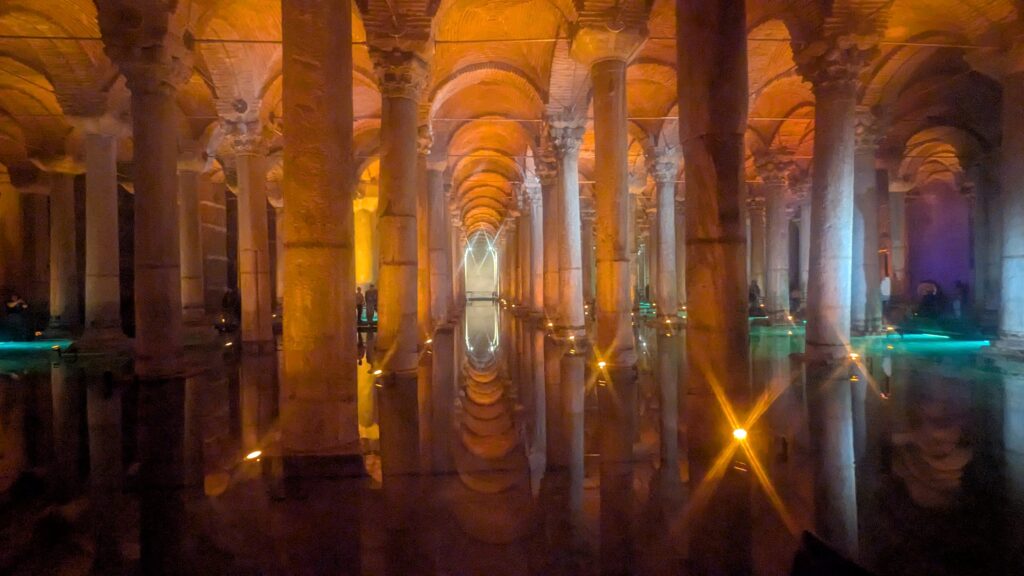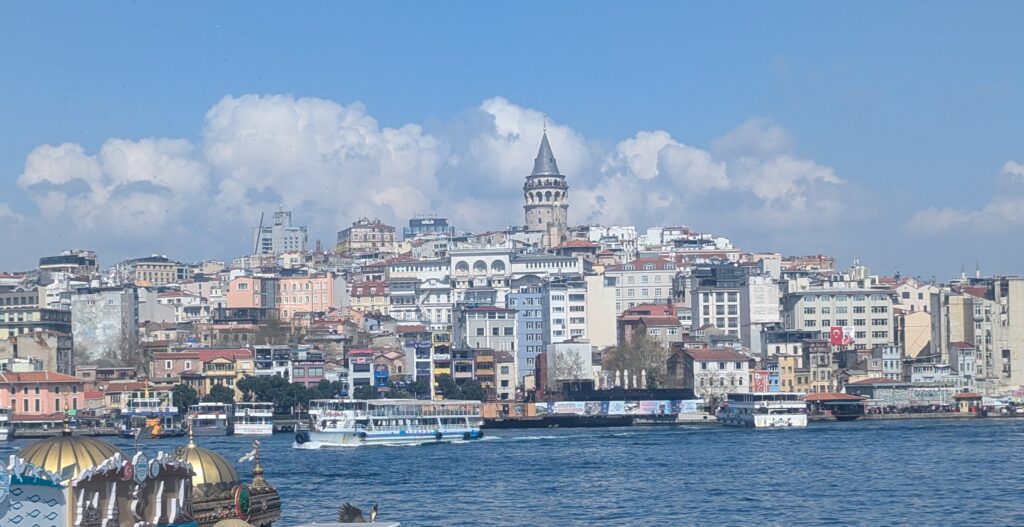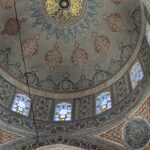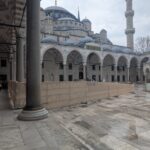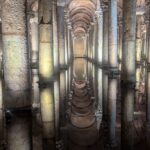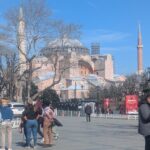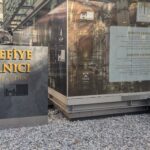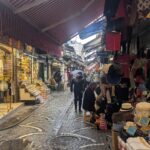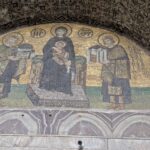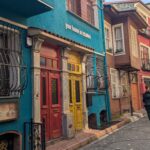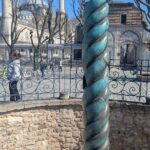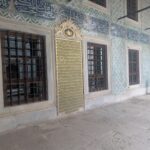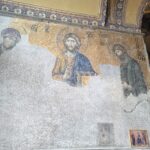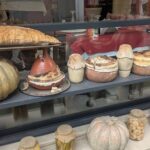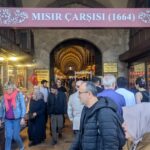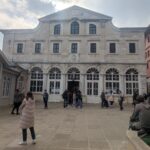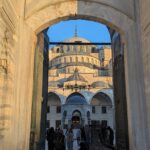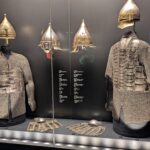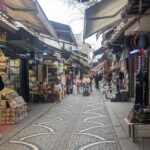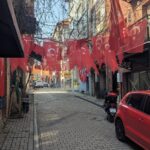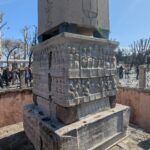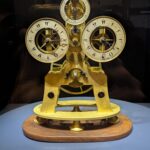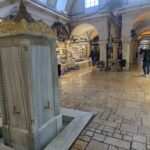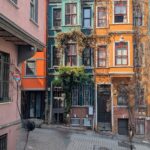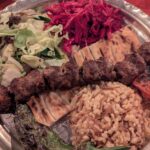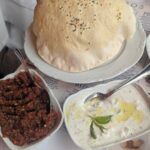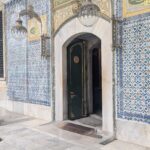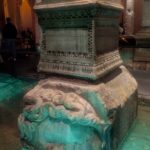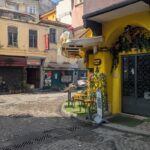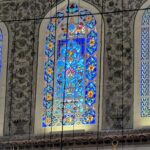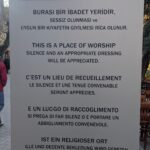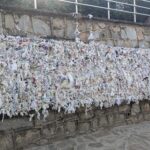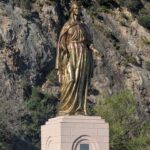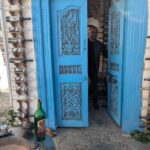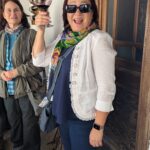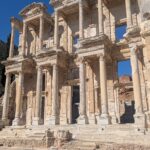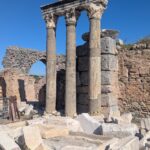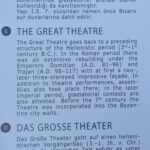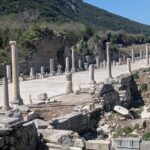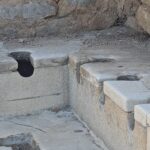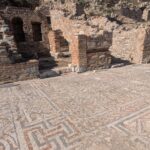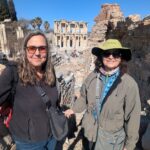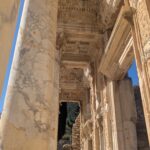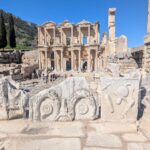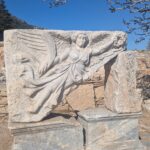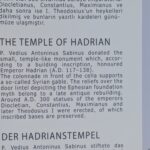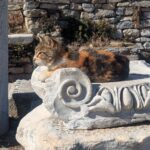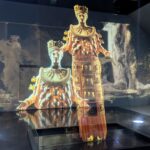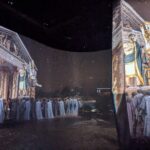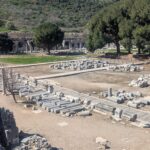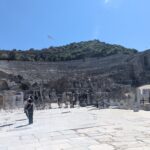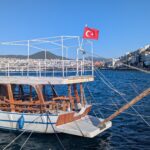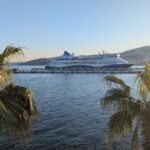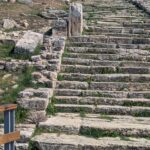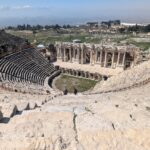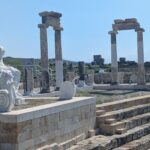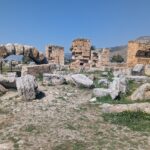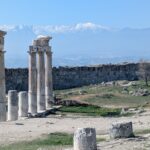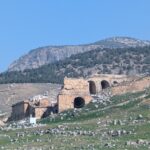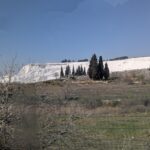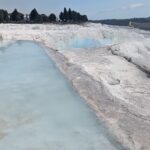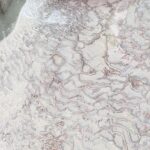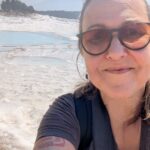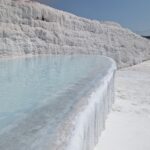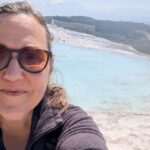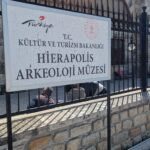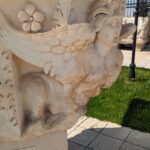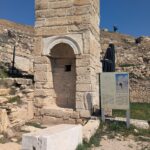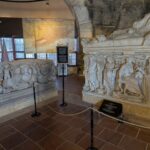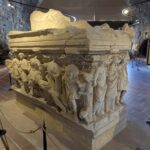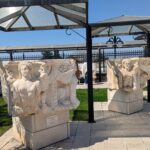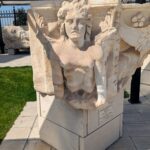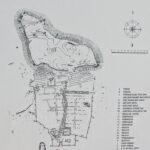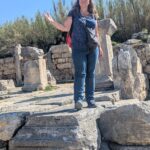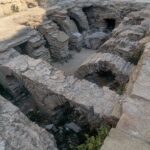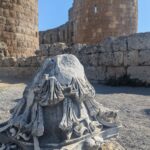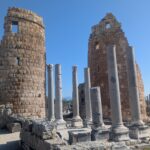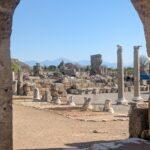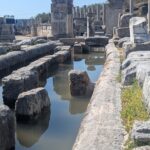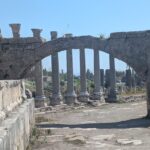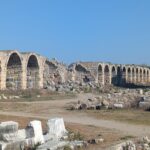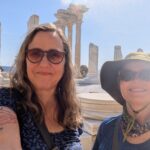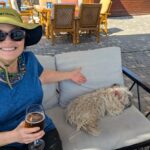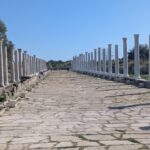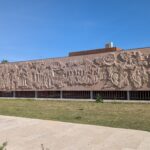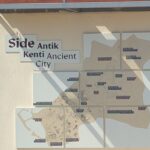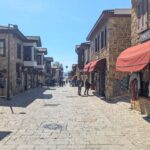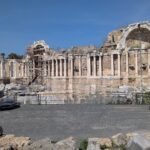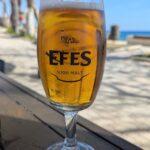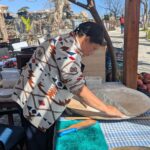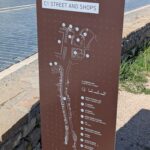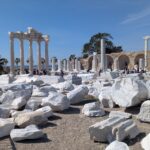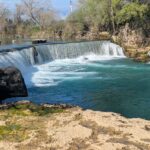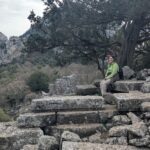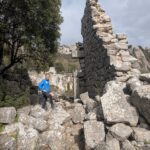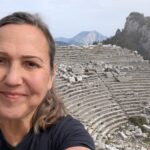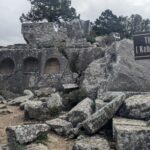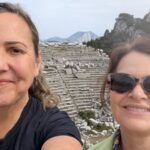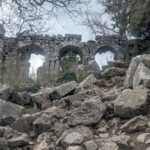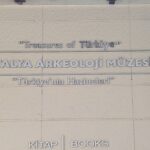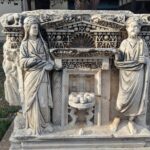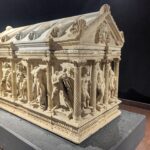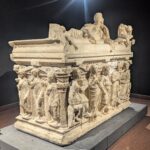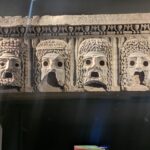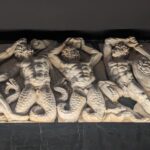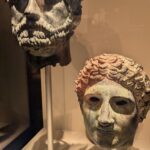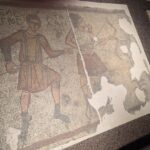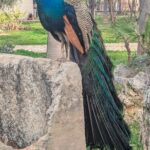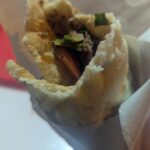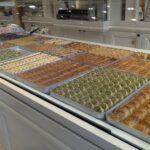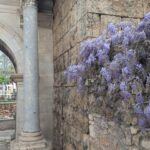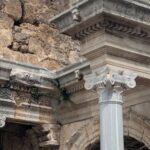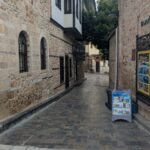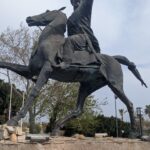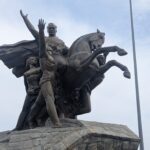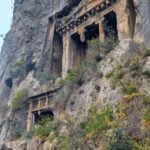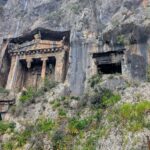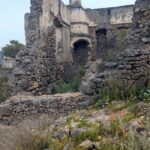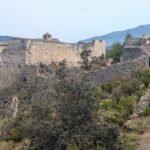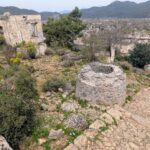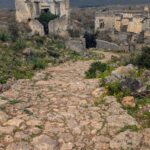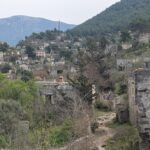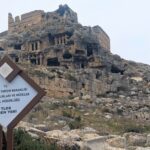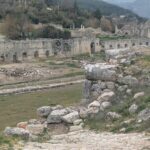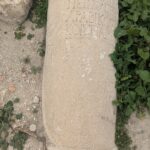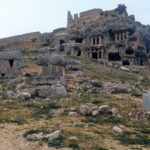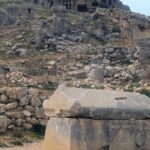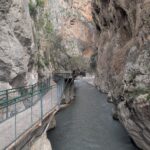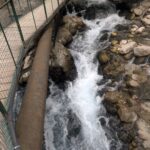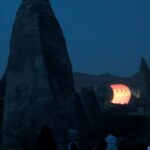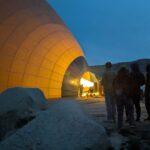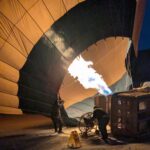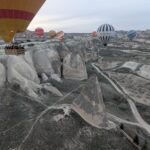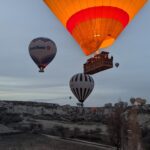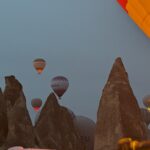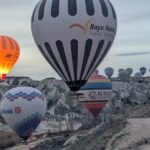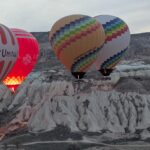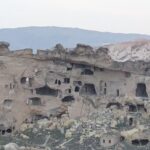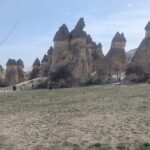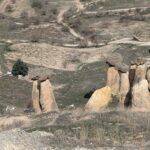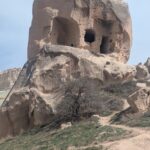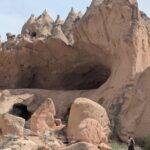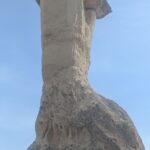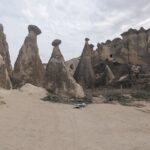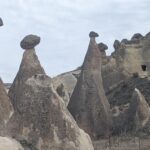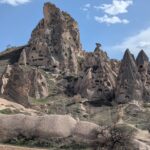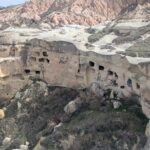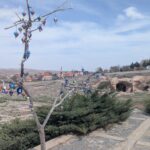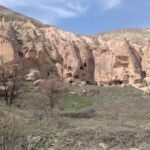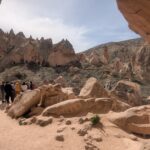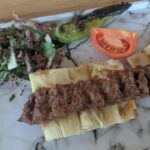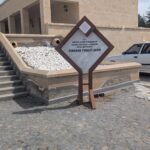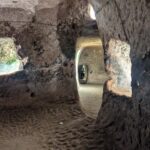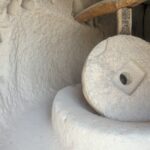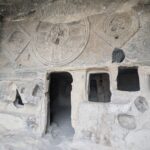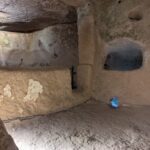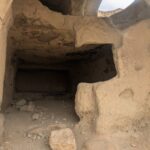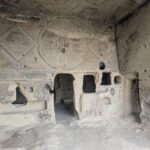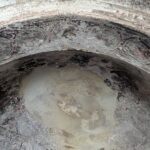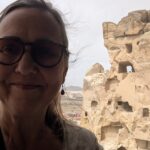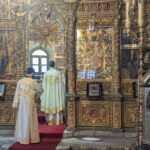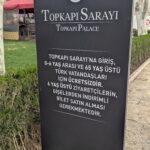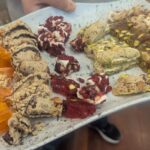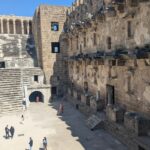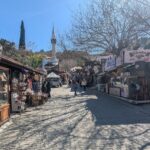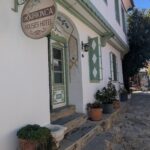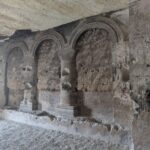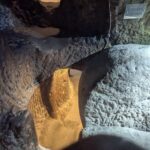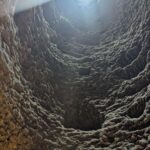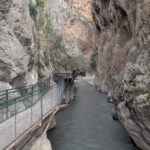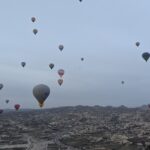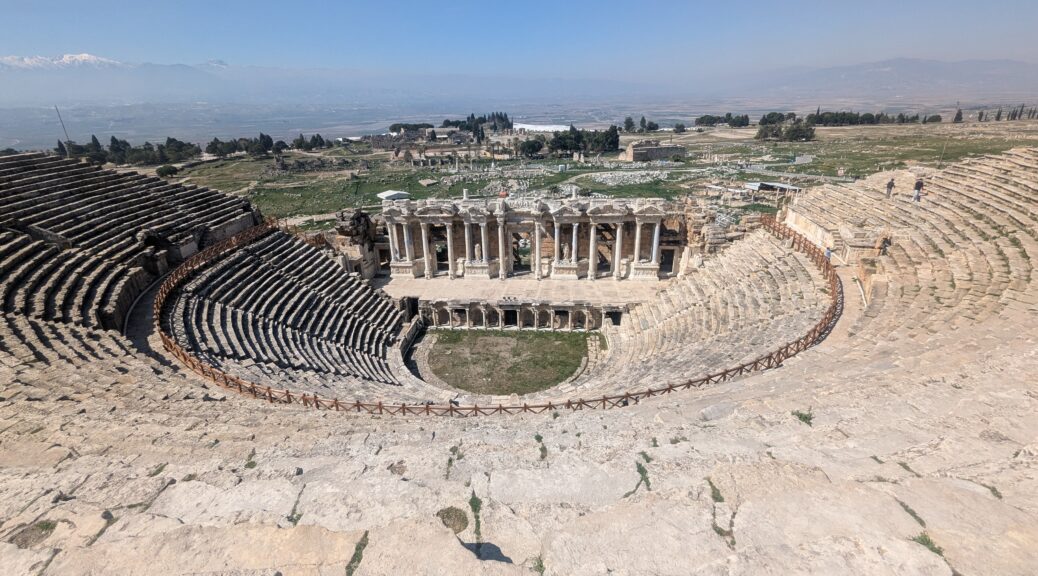
Türkiye
Kelly and I planned a Türkiye trip online. We tried Trip.me, which we had used to plan our Myanmar and Morocco trips in 2017. They are now called TravelLocal. They have many different itineraries to Turkey. We found this one, 10-day Turkey Tour; we customized it adding a few sites we wanted to see. However, we had also found One Nation and another travel site as we were exchanging emails with TravelLocal. Their itinerary was $1000 more than a similar one with One Nation.
We booked this trip, 10-days Istanbul Ephesus Pamukkale Antalya and Cappadocia. We added an extra night in Istanbul at the end of our trip and an extra night in Antalya for day trips to Termessos and Fethiye.
We both left Tuesday, 18 March. After weeks of searching I found some decent flights without having to spend a night in London or Amsterdam or Frankfurt. I did have to leave Faro very early but I arrived that same evening. I booked an extra single night at our Istanbul hotel, Antea Hotel Old City. One Nation wanted to charge for a double, €150. I booked myself. On the hotel website it was about €100, on Booking.com, I paid just €50.
Istanbul
I booked this tour for Wednesday morning at 1100, Istanbul Ultimate Food Adventure. Unfortunately, they cancelled on me, wanting to reschedule for 1600. I declined since Kelly was due around then. I would have really enjoyed trying the different dishes.
Neither my Vodaphone SIM or my Tello SIM, my US number, were picking up local networks. I did get a paper map from the front desk but was worried about getting lost without my google maps so didn’t go far. Sad, as I used to find my way around fine with just paper maps.
The Serefiye Sarnici, a cistern from the Byzantine era, was next door to my hotel. There is a 360 degree history multimedia show from Constantinople to Ataturk displayed on the walls and columns every 20 minutes. Expensive but interesting.
I also spent some time in the Grand Bazaar. Kelly arrived and we went out to find an ATM that didn’t charge 8% fees (use ING!). We had dinner and wandered the Hippodrome before making an early night.
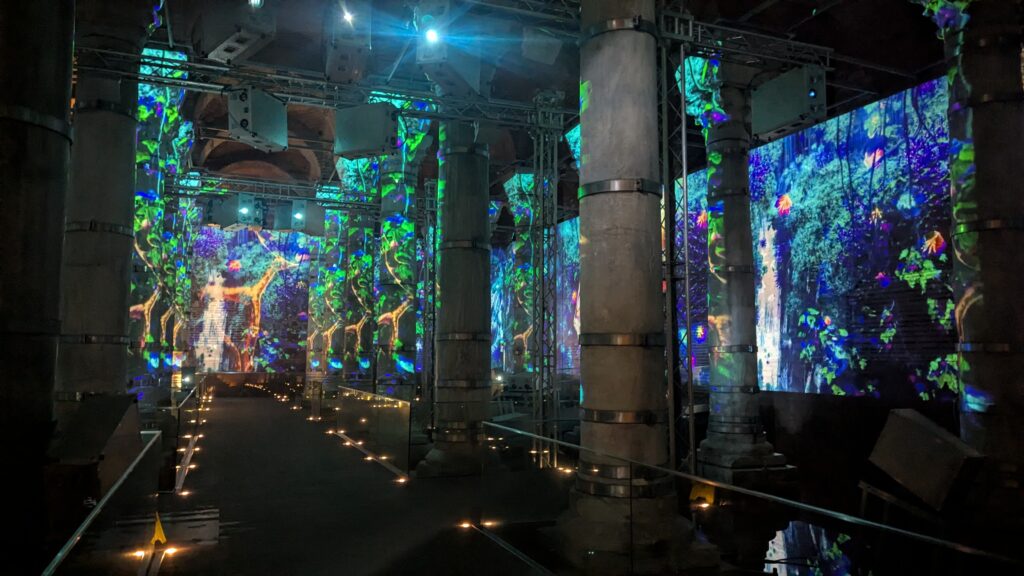
The next day we had a full-day tour of Istanbul. We started at the Hippodrome again, seeing the Serpentine Column, the Walled Obelisk, and the Egyptian Obelisk or Obelisk of Theodosius. Then we visited the huge and amazing Blue Mosque or Sultan Ahmed Mosque.


After our visit, we stopped in Sultan Ahmet Park, with its beautiful fountain and mosaics, on the way to Aya Sofya. Last time I was here, this was “just” a museum; it was a former mosque and former church. It has been restored to a working mosque so visitors can only go to the second floor. There are great views from here and some beautiful mosaics.
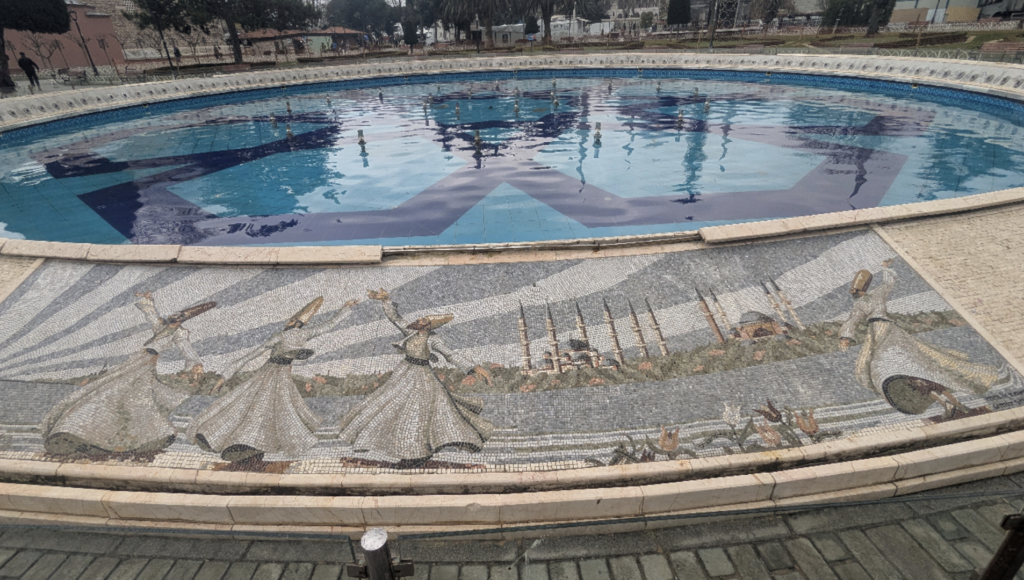
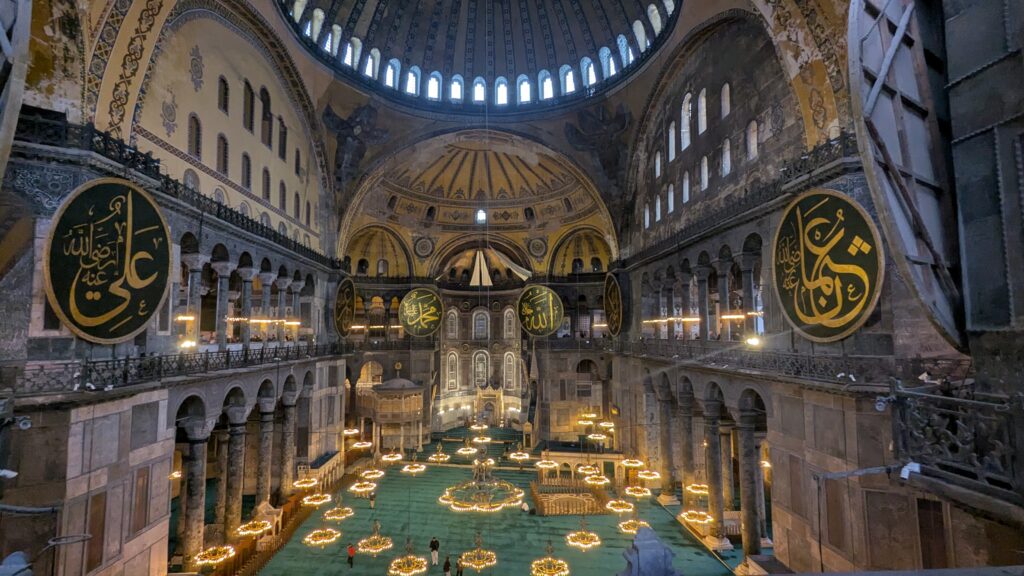
We also spent about an hour at the Grand Bazaar; I wandered more with Kelly than I did the day before, knowing my way out better and not worrying about getting lost.
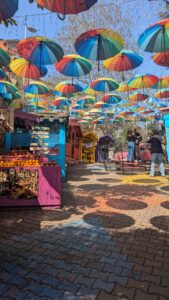
We returned to Istanbul at the end of our tour, we had a free day before flying home. We booked a walking tour with Get Your Guide of the Fener-Balat neighborhoods. It was a great tour, I’d never been to that area of town before, it is quite lovely. We visited Saint George’s Cathedral, the Virgin Mary Greek Orthodox Church, the Ahrida Synagogue, and Saint Stefan Church. We enjoyed the colorful houses and streets of Fener and Balat.
We walked most of the way back to Old Town along the waterfront, enjoying views of Galata Tower across the Golden Horn, before visiting the Spice Market then going to the Basilica Cistern, also known as Yerebatan Sarnici.
![]() We also purchased tickets for the cistern on Get Your Guide. It is highly recommended to buy tickets in advance otherwise the queue for tickets can be very long. Seeing the long lines would make it seem very crowded but it is arranged so everyone moves in one direction and it doesn’t seem like there are that many people inside.
We also purchased tickets for the cistern on Get Your Guide. It is highly recommended to buy tickets in advance otherwise the queue for tickets can be very long. Seeing the long lines would make it seem very crowded but it is arranged so everyone moves in one direction and it doesn’t seem like there are that many people inside.
Over 9800 square meters, this amazing underground structure was built to store and supply water to the city during the Byzantine era. It is supported by 336 columns, including two Medusa heads. It’s a must-see site in Istanbul. It’s gorgeous.
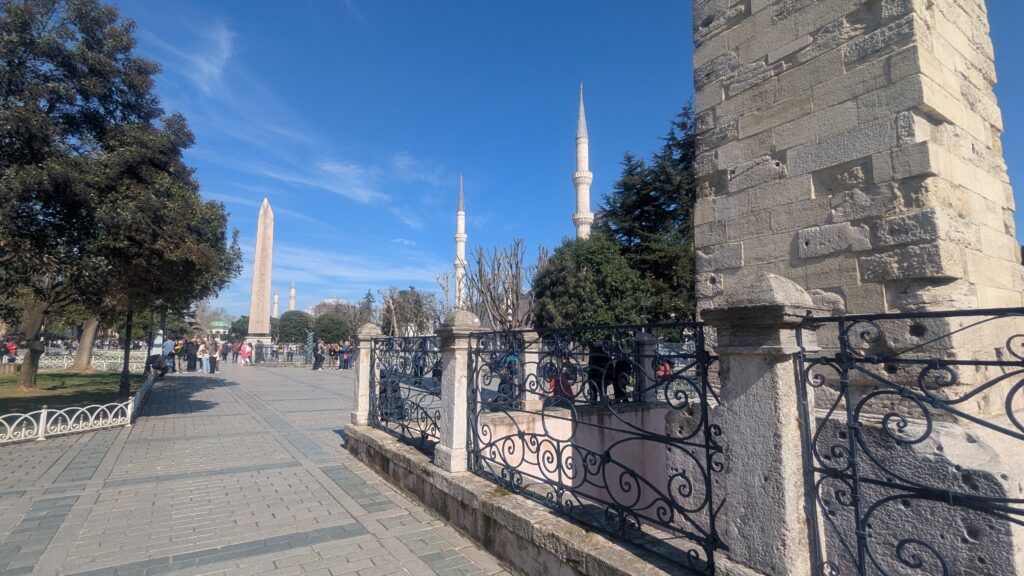


Ephesus
The next morning we had a very early flight to Izmir, then a full day tour of Ephesus. I had been here 22 years ago with my daughter, Alex, on our Greek Island cruise. We had a stop at Kusadasi to visit Ephesus.
We started this tour the same way, with a visit to the House of Mary or Meryemana Evi. Christian and Muslim pilgrims visit the site believing that Mary was brought here by Saint John, after Jesus’s crucifixion, and lived here the rest of her life. We visited the house, the fountains, and wall of wishes before continuing to Ephesus.
The Ephesus Archeological Site is amazing. We saw the entire site, the library, temple of Hadrian, ending at the new Ephesus Experience Museum, a multimedia show. Last time I was here, I wasn’t able to visit the library, you could see the facade but it was blocked off, and the agora wasn’t open. Incredible place. I was very happy to return.
We also visited the town of Sirince, a lovely, small, Ottoman Christian village, founded around 323–31 BCE. The village was considered an important water source for Ephesus and is now a national heritage site. We tried some of the local wine, and the great pomegranate vinegar. I purchased a small, carry-on friendly size, to bring home.
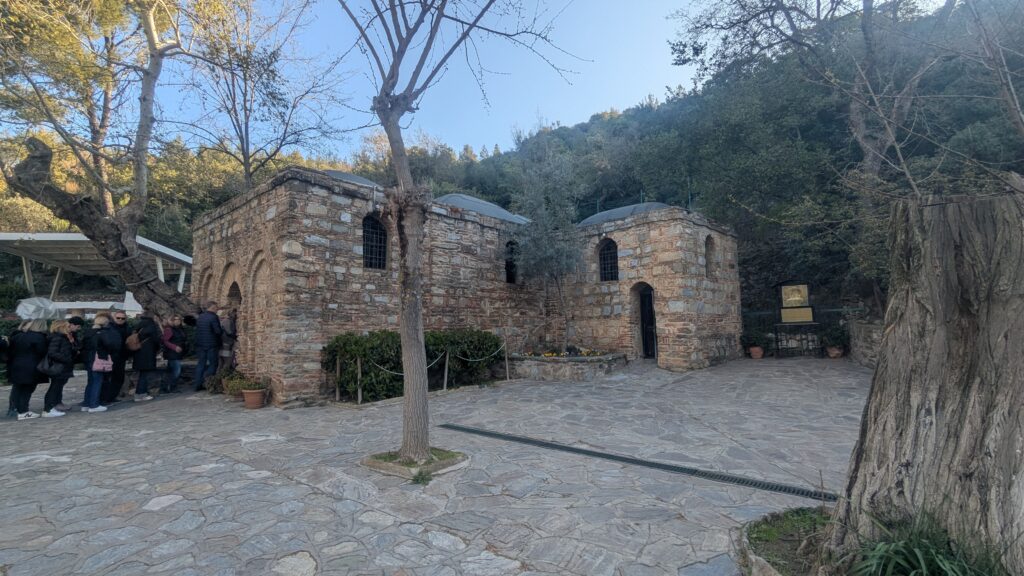
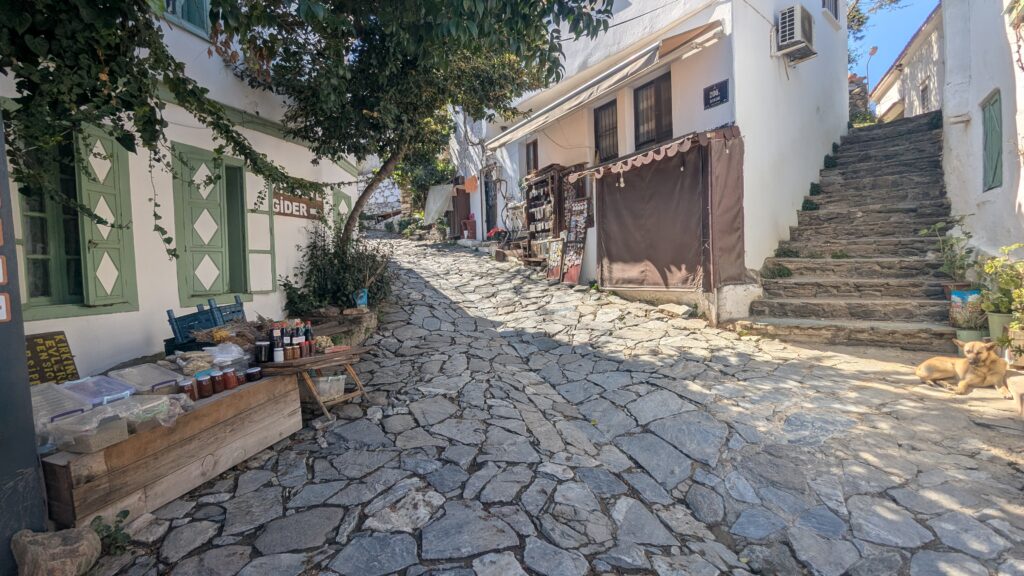
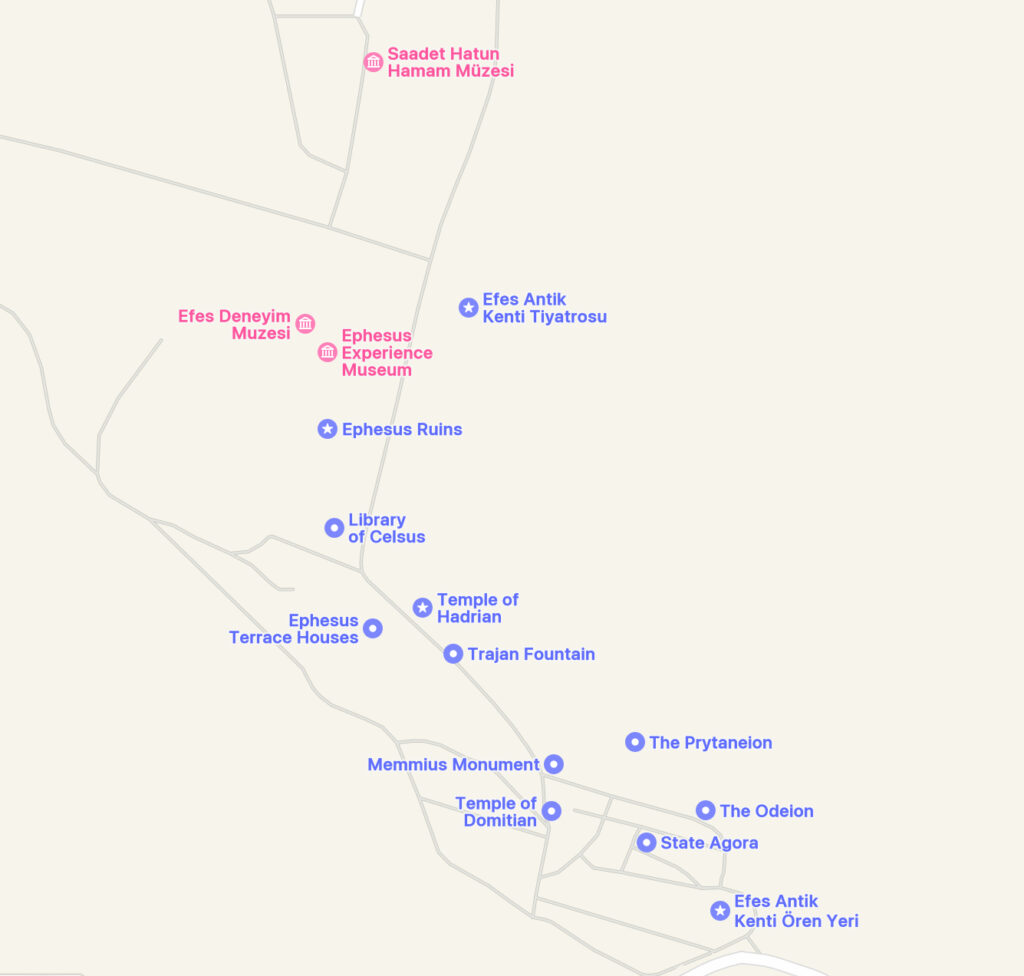
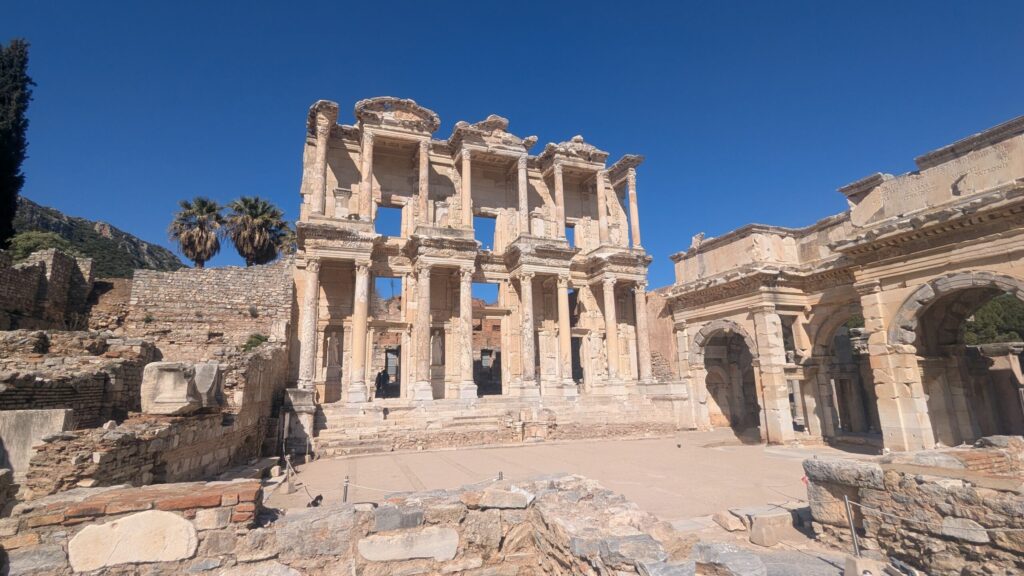
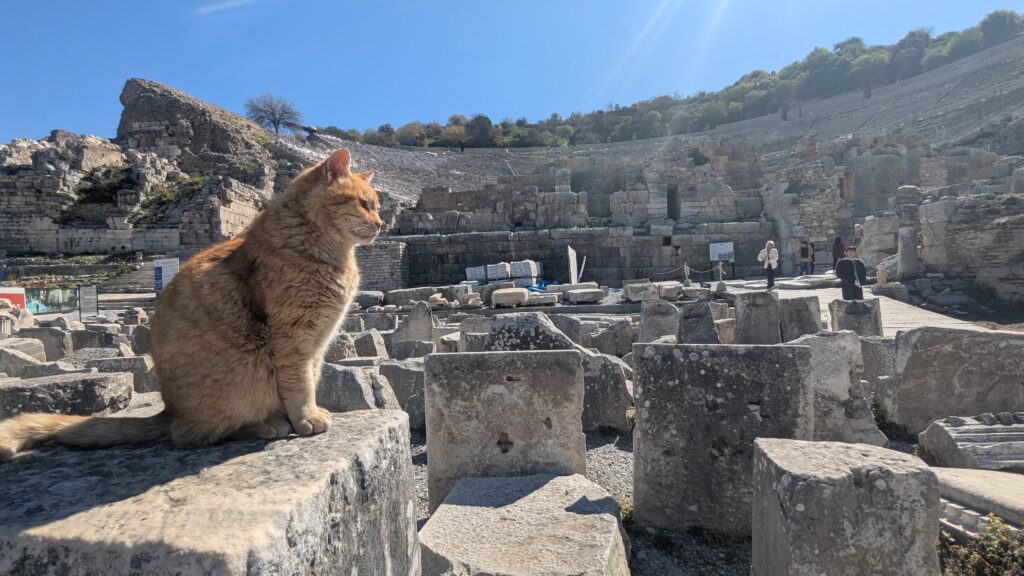
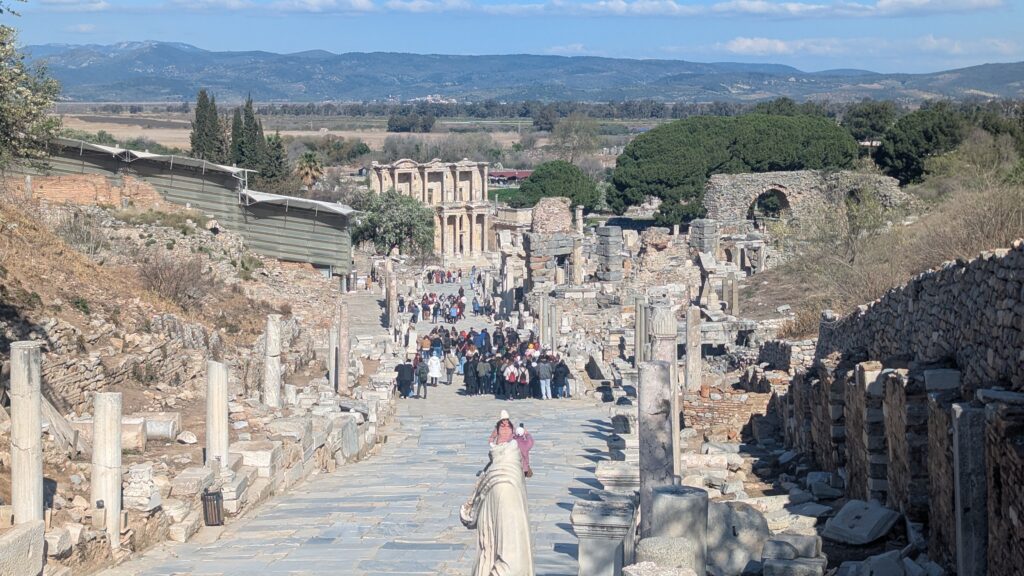
Pamukkale and Hierapolis
After Ephesus we went to our hotel, Efe Boutique Hotel, in Kuşadasi. It was right on the waterfront, with beautiful views. We walked down to what we thought was an old fort, but it was a newly built maritime museum. Unfortunately, closed, but a beautiful walk, regardless.

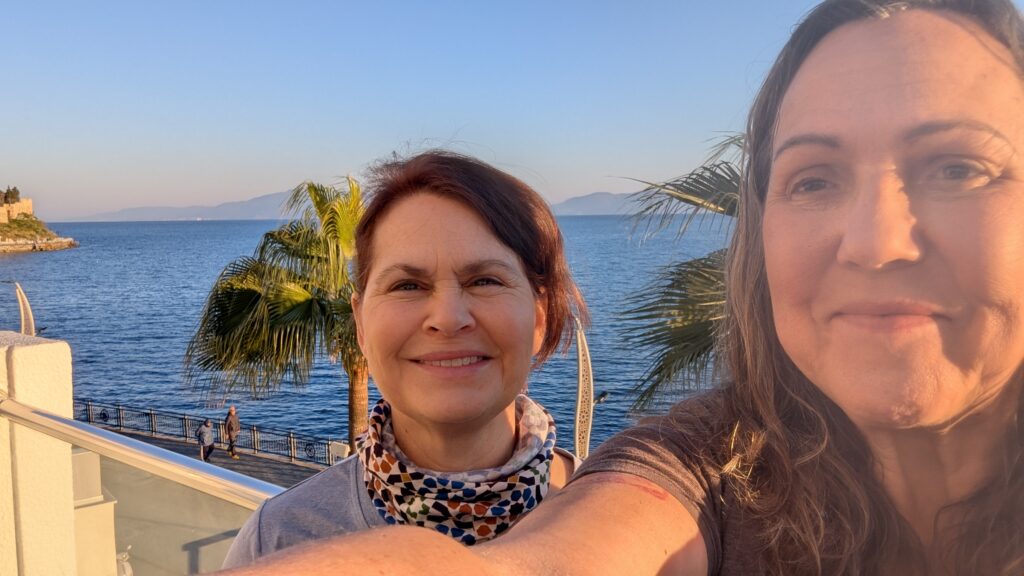
We only spent one night here. We checked out early for a full day tour of Pamukkale and Hierapolis. Kelly booked parasailing at Pamukkale and was dropped off.
I explored Hierapolis, a UNESCO World Heritage Site. The site was from the 8th c BCE but much of what survives was built by the King of Pergamum Eumenes II during the 2nd c BCE. The name Hierapolis was derived from Hiera, who was the wife of the Pergamum founder Telephus.
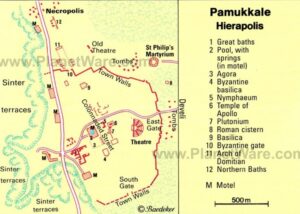
I started with the amazing theater, unfortunately you cannot walk all the way down but can visit the upper half of the cavea all the way around.
I visited Saint Philip’s church and tomb, then the Ploutonian.
Pluto’s Gate was considered the entrance to hell, or gateway to the underworld, the realm of Pluto. It is a small cave that is geo-thermally active and emits carbon dioxide and other toxic gases. Bulls used to be sacrificed in the cave. There were two statues of Cerberus, the three-headed dog that guards the underworld, found at the site.
After the theater and other sites, I visited the Pamukkale travertine pools or cotton clouds. So beautiful! I walked all the way out to the end of the pools.
After the pools, I spent the last 1/2 hour at the museum. There are some great ruins, sarcophagi, columns, and more. I could have used another hour here as I had no time to visit the North Gate or Necropolis.

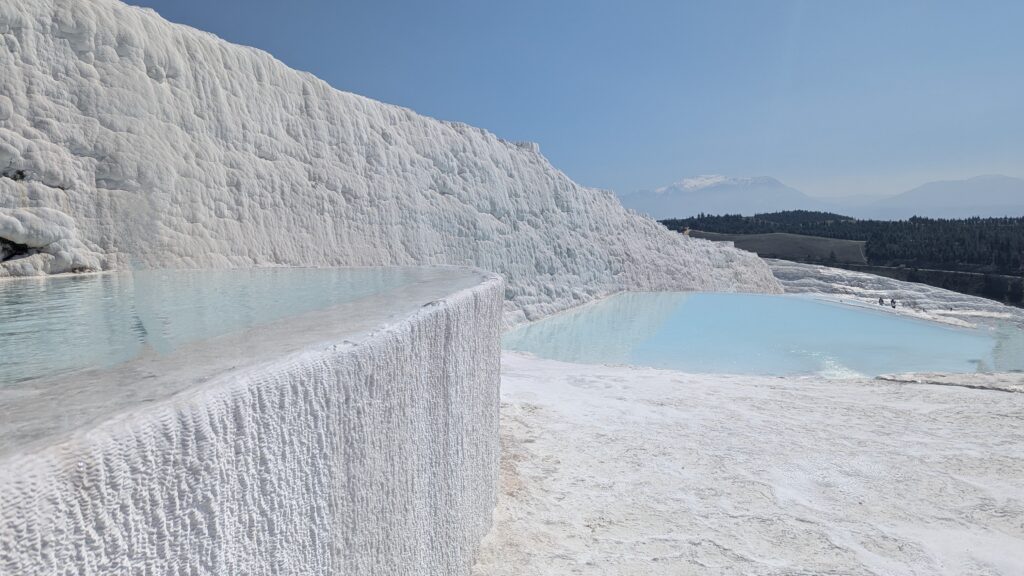
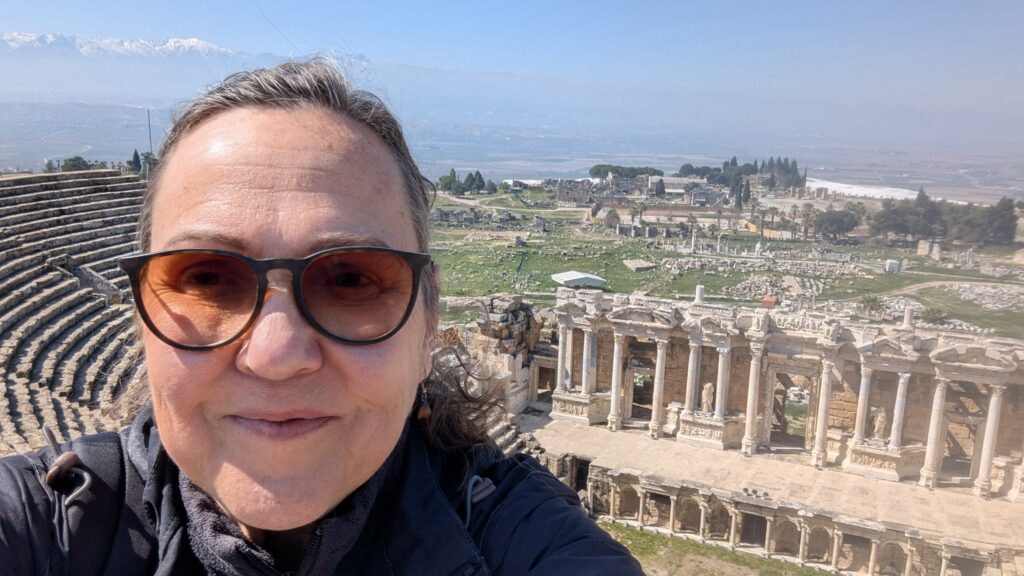

We were dropped off at the bus station for our 3+ hour trip to Antalya.
Antalya
We stayed at the Hotel 1207 Special Class in Old Town. The hotel looked nice but the room was very dark, the shower took about 10 minutes to get hot water, and breakfast was never served on time. In fact, none of the hotels on the tour were very good. Istanbul was probably the best but it was a very small room. Despite the hotels, One Nation was very well organized. All transportation very efficient and on-time, the local guides they used were all knowledgable and friendly.
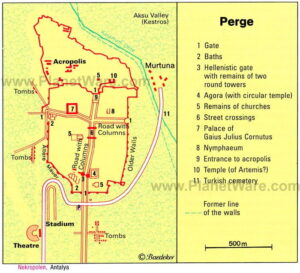
Our first day in Antalya, we had a full-day tour of Perge, Aspendos, Side, and the Manavgat Waterfall. There were about 8 other people on the van, we had a good guide, Yakup Aksu, with Red White Tours.
Perge dates back to the 13th c BCE, according to writings, but the earliest archeological ruins date from the 5th c BCE. The site is huge, from the stadium and theater, to the great Roman gate, city walls, the colonnaded streets, we walked all over.
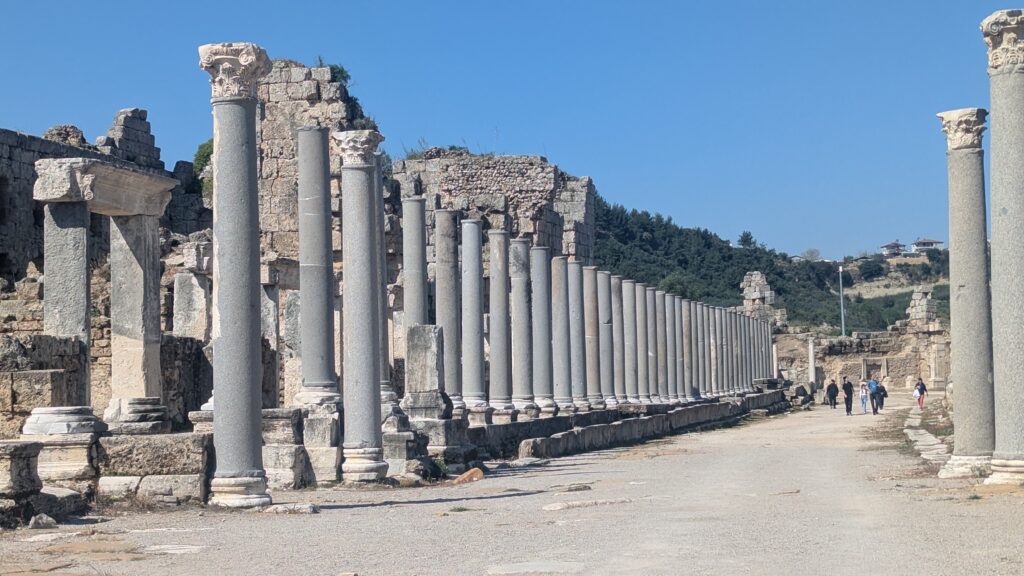
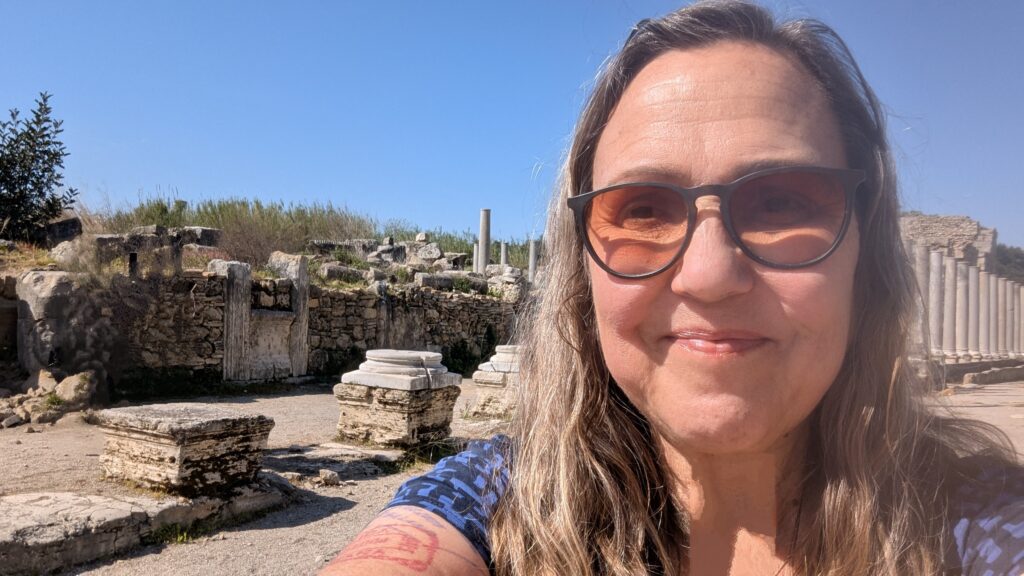
We made a short stop at the theater at Aspendos. It held around 7000 people, some estimates say up to 11,000. Our guide said he attended a concert there with over 15,000.
British archaeologist David George Hogarth had described the Aspendos Theatre in 1909: “You may have seen the amphitheatres in Italy, France, Dalmatia and Africa; temples in Egypt and Greece; the palaces in Crete; you may be sated with antiquity or scornful of it. But you have not seen the theatre of Aspendos.” The theatre was built in the 2nd century CE, during the reign of the Roman emperor Marcus Aurelius (161-180 AD).
It was updated to a caravanserai and restored during the Seljuk period in the 13th c. It still hosts festivals and concerts.
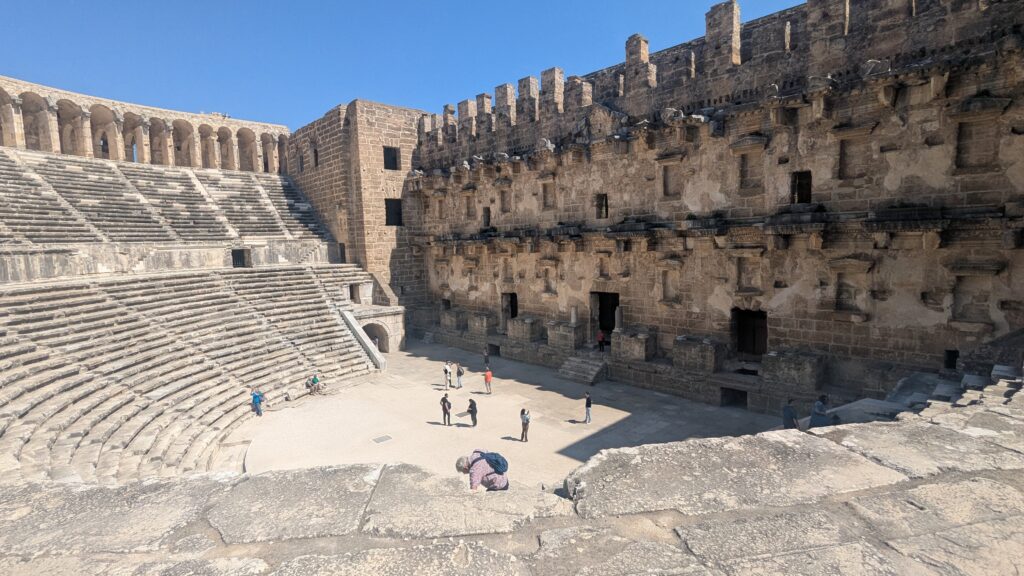
After Aspendos we continued to Side (SEE-day). I could have easily spent a full day here, from the ruins to the old town. I would have loved to see the Side Museum, also.
There are gorgeous beaches, a monumental fountain, ancient ruins. We saw the Roman theater, the agora, the harbor, the huge temple of Apollo, built around the 150 CE, the lovely facades in Old Town. We took time out for a beer on the waterfront.
We visited the Manavgat Waterfall before returning to Antalya. I had some great gelato, black mulberry and melon.

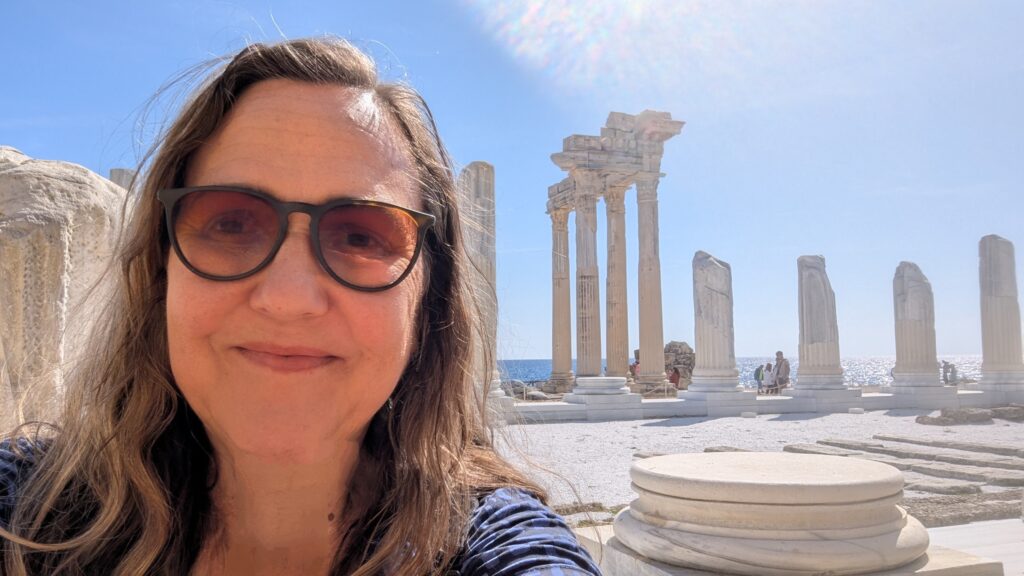
We had a free day on the original tour. We wanted to see both Termessos and Fethiye so added another extra night in Antalya. We knew Fethiye would be a full day tour and wanted to go Tuesday but the buses weren’t running early enough so we booked our Termessos tour.
We used GetYourGuide for the Antalya: Hiking in Termessos Ancient City half day tour. We had a great guide, Onder Uguz. Called the Machu Picchu of Turkey, the site is amazing. It is part of the larger Mount Güllük-Termessos National Park in the Taurus Mountains, built at about 1000 meters.
We visited the necropolis, city gates, agora, cisterns, the absolutely stunning theater, with its unbelievable views. Termessos is an ancient Pisidian city, inhabited by the Solims or Solymi, a tribe of warriors from Northern Lycia. The city was attacked but defended itself against Alexander the Great in 333 BCE due to its location.
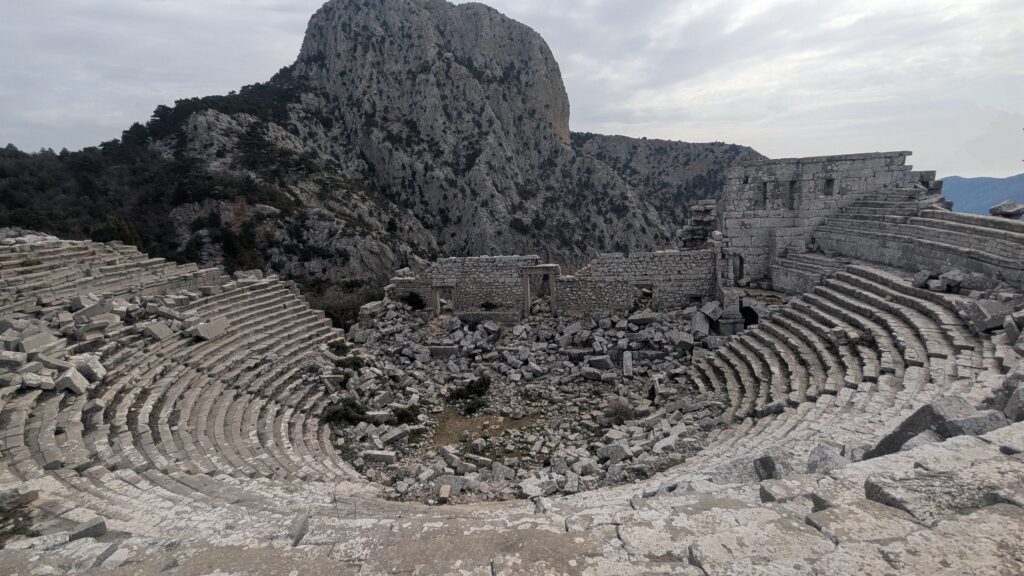

When we got back to town we went out to have lunch and explore Antalya Old Town. We visited Hadrian’s Gate, then walked along the water front until we got to the wonderful Antalya Archeological Museum.
The artifacts and exhibits here are from Perge, Side, Termessos, and many other places we had visited. There were great sarcophagi, greater than life-size statues of Hadrian, Artemis, Hercules, Trajan, some beautiful mosaics.
We took the tram back to Old Town.
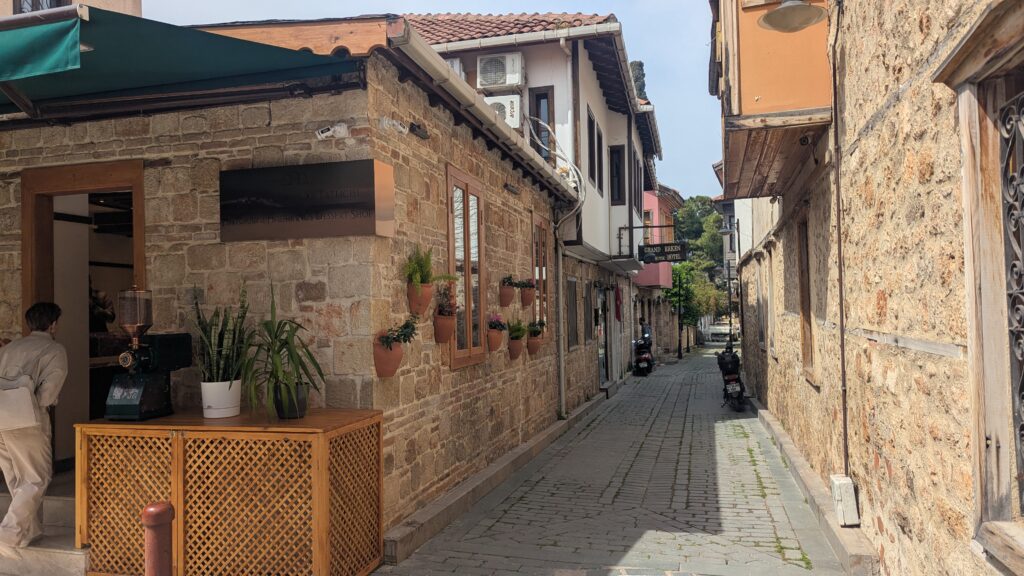
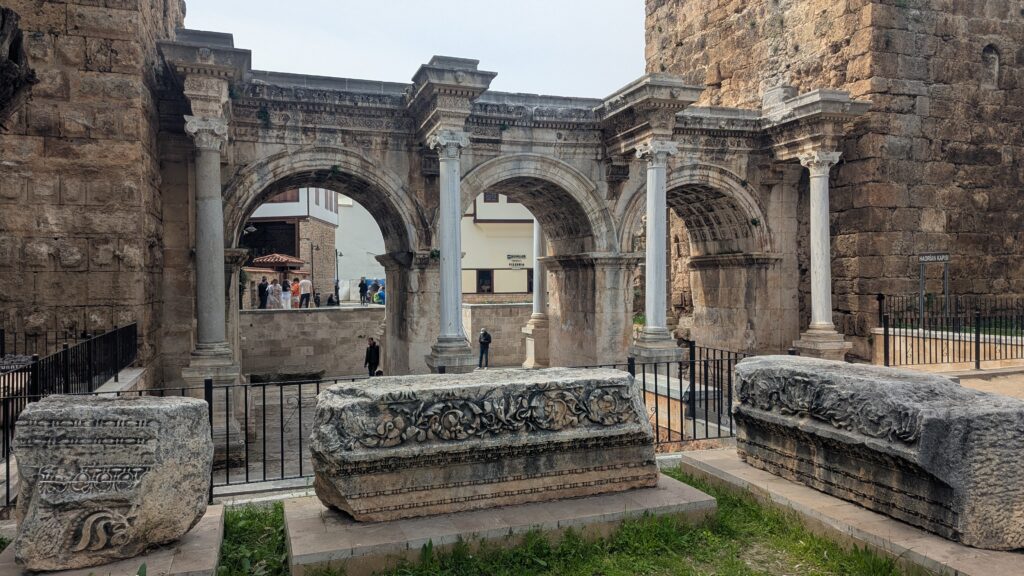
Kelly booked bus tickets for us from Antalya to Fethiye and a driver/guide. We booked a tour with Travel To Fethiye, a company out of the UK, a “private trip from Fethiye to Amyntas Rock tombs, Kayakoy Ghost town, and Tlos”. We arrived a little late but our guide, Rasih, had the wrong day anyway. Thanks to a helpful English speaker at the bus station, we were able to call him and he showed up very quickly.
Our first stop was in Fethiye, the Amyntas or Lycian rock tombs. We paid a small fee, then climbed up to the highest one first, where you can enter the tomb. We both went over to the larger group carved in the cliff, you cannot get as close here but still amazing to see them all.
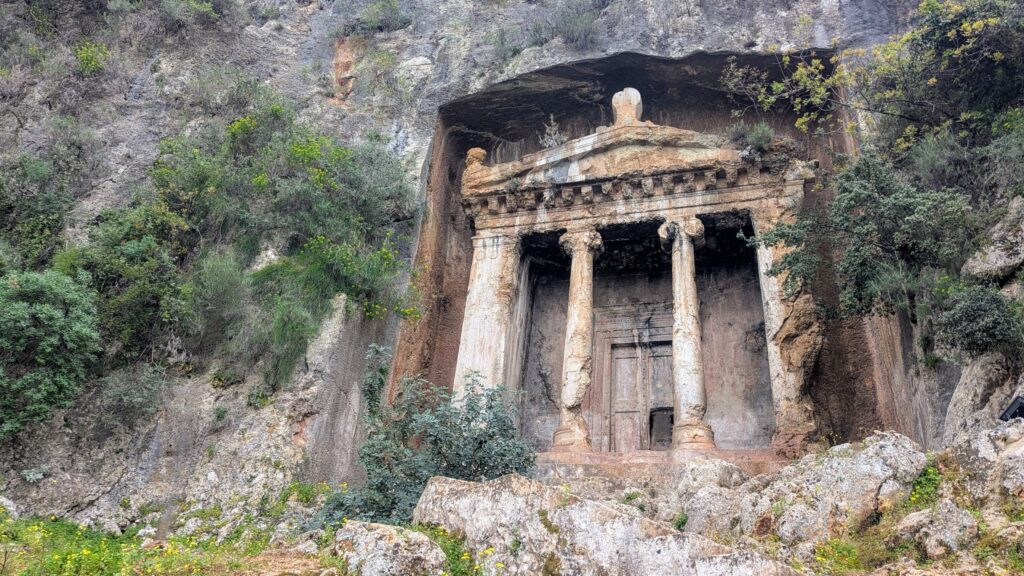
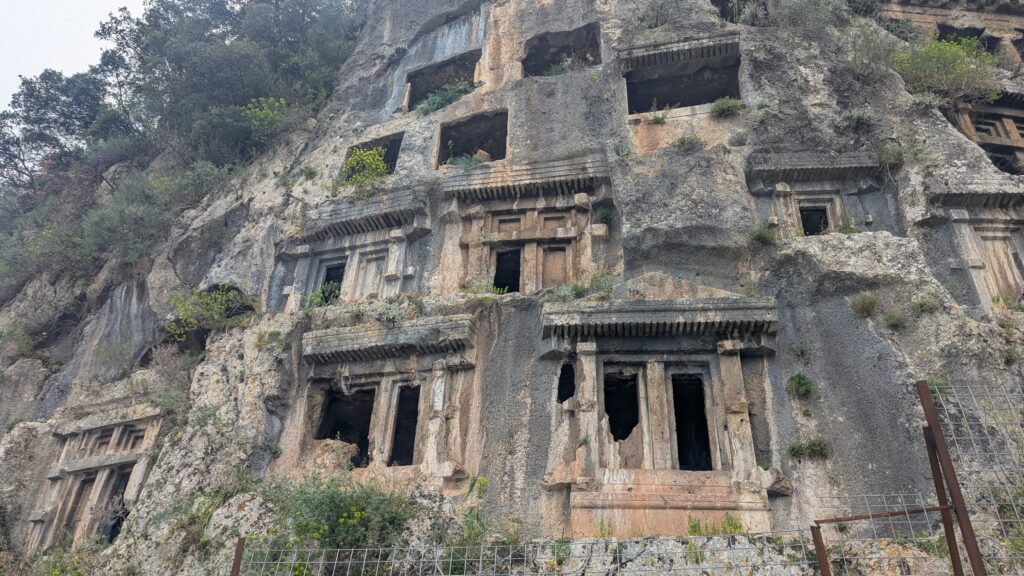
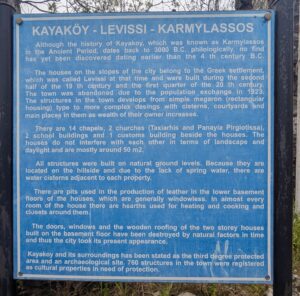 We went to the Greek village, Kayakoy, next. It was home to about 6000 Greeks since the 18th c. It was emptied out after Greek/Turk fighting in 1923 and the population exchange. Temporarily lived in by Macedonians who moved to Turkey, they abandoned the village and it became a “ghost town”, it is the largest abandoned Greek village in Turkey.
We went to the Greek village, Kayakoy, next. It was home to about 6000 Greeks since the 18th c. It was emptied out after Greek/Turk fighting in 1923 and the population exchange. Temporarily lived in by Macedonians who moved to Turkey, they abandoned the village and it became a “ghost town”, it is the largest abandoned Greek village in Turkey.
We enjoyed wandering here for about an hour then had a quick lunch of a Turkish pancake with spinach.
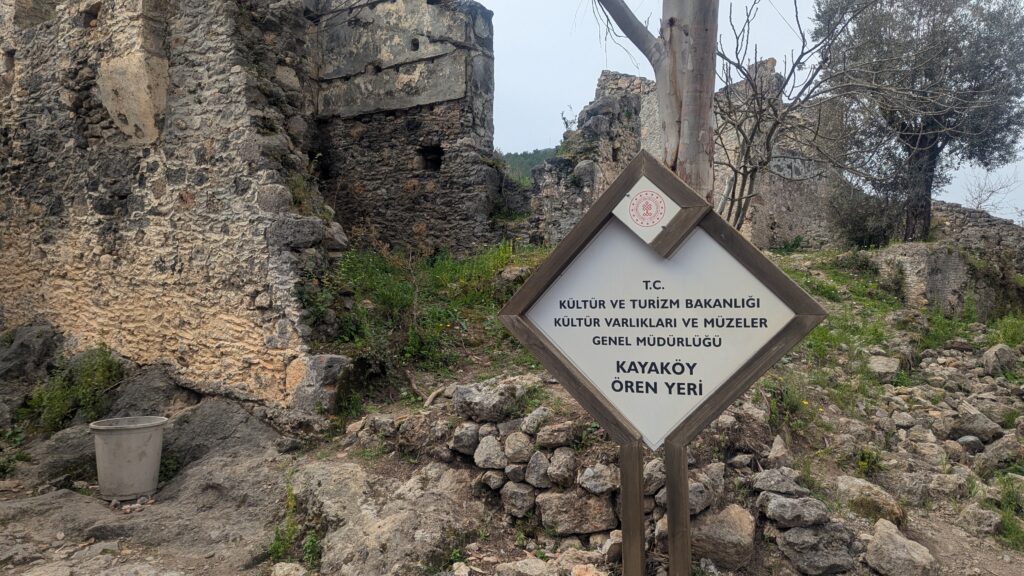
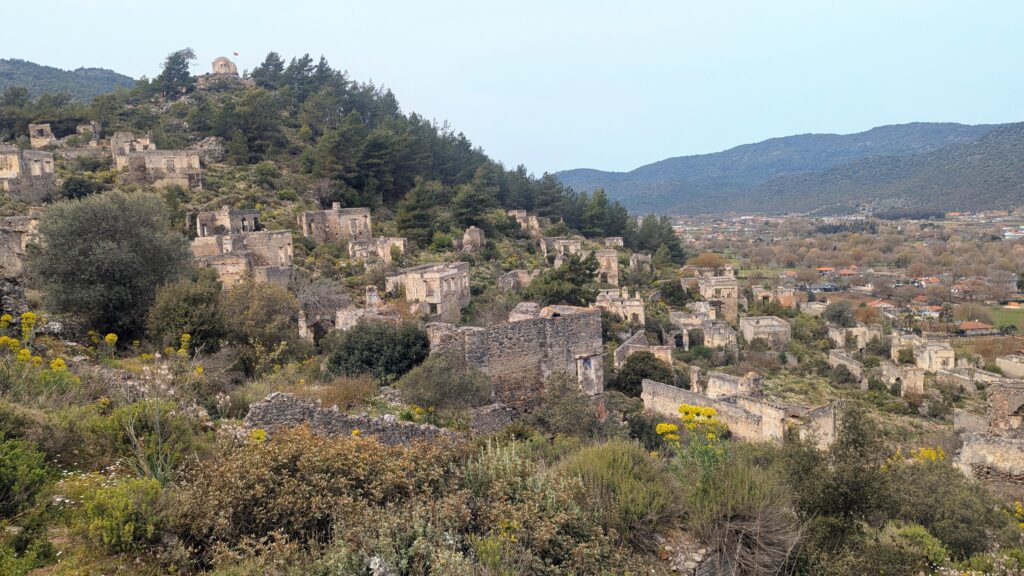
We visited the ancient ruins of Tlos in the afternoon. It is another Lycian settlement. It was ruled under the Hittites, the Persians, and then the Macedonians when Alexander the Great arrived in Anatolia in 333 BCE. It was later under the control of the Ptolemies, the Seleucids, then part of the Lycian Union in 168 BCE. It was a Roman province in 43 CE under Emperor Claudius. Archaeological excavations are ongoing, including the theatre, stadium, great bath, temple of Kronos, basilica, and rock tombs. The theater and stadium are blocked off but we walked all around the rock tombs. It’s a great site. We spent about an hour here.
Rasih really wanted us to see Saklikent Milli Park so we stopped there before heading back to Fethiye. He took us out to the canyon. Very glad we had some time to see this. Beautiful.

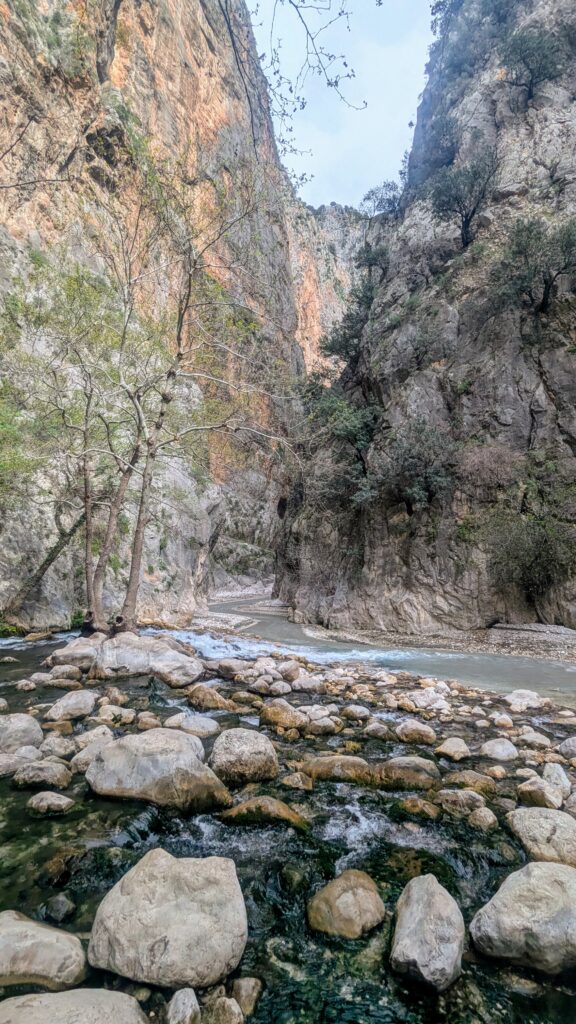
Cappadocia
On March 26th, we had a morning flight to Kayseri. We stayed at the Heaven Cave House in Goreme. NOT a cave, all the hotels seemed to have cave in their names despite just being hotels. We were disappointed! The hotel is also quite far from the main town.
The next day we had scheduled our balloon ride. Fortunately, the weather cooperated and we were able to take the flight. We heard people talking at breakfast the following morning; their trips were cancelled due to high winds. We were picked up around 0430.
We got to watch multiple balloons being raised and taking off. It was an amazing morning.
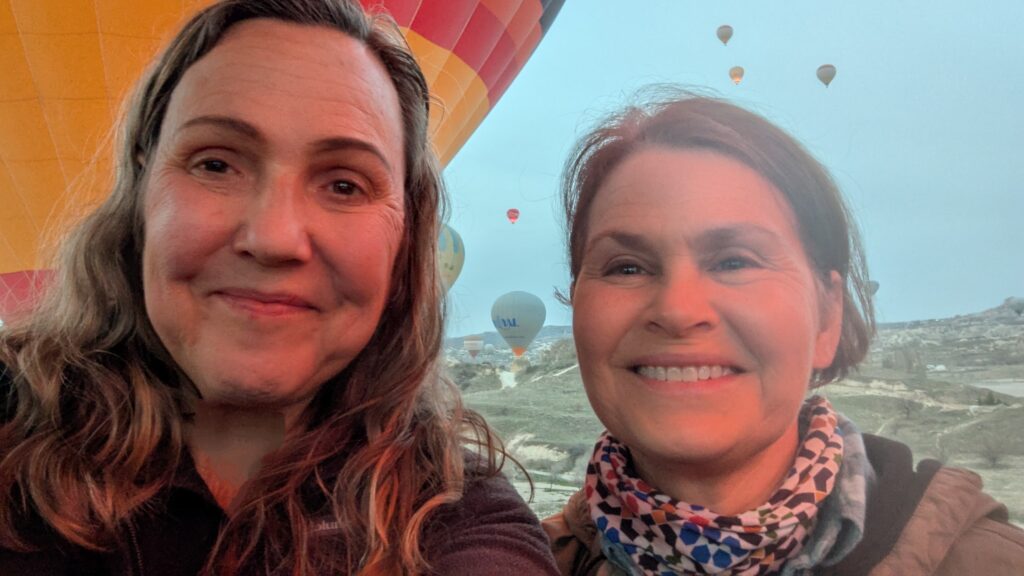
We returned to the hotel. We had time for breakfast before pickup for our full day tour of North Cappadocia. We started with Devrent Valley, famous for its unique fairy chimneys. We visited Pasabag Valley or Monks Valley to see the mushroom-shaped pinnacles. We had lunch in Avanos, then went to the Zelve Open Air Museum. This museum features carved caves and ancient churches.


Finally, we made a stop at Uchisar Castle. Amazing!
Uchisar Castle is an ancient fortress in Cappadocia, Turkey. It was created in the volcanic rock, and has a large network of tunnels and chambers. It provided protection against invaders for centuries.
Kelly and I had booked a Whirling Dervish show, so were dropped off for that while the others on the tour were returned to their hotels. I was so tired from our early morning and my cold I had to keep fidgeting to stay awake. But I really enjoyed seeing this ceremony. They asked us not to photograph the religious ceremony but they came back in to let us get pictures for 5 minutes.

We had another night in Cappadocia then a full-day tour of South Cappadocia. The tour began with a visit to the Red Valley where we visited the churches cut in the rock, including Saint John the Baptist church, then visited the Rose Valley.
We also visited Cavusin Village, famous for its historic houses and Christian churches. After lunch we went to the Pigeon Valley or Guvercinlik Vadisi. Our final stop was the underground city, Ozkonak Yeralti Sehri, where early Christians sought refuge.
They aren’t sure when it was built, they think during the Byzantine era, but it was discovered in the 1970s by a farmer who was wondering where all his water was going. It was draining into a huge subterranean city stretching ten floors deep that housed 60,000 people. Reaching a depth of 40 meters in total, today only the first four floors of Özkonak Underground City are open.
From One Nation: ”As you wander the tiny corridors, you’ll see the sophistication of the city which had a built-communication system made up of pipes that connected all 10 levels. Look out for holes in the walls too — these provided ventilation in the event that Ozkonak city would have to close itself off to the outside world if enemies tried to invade. The underground city also had its own winery and water well, and if enemies did get too close, well Özkonak’s inhabitants were more than ready to pour hot oil on them through secret holes designed for that very purpose.”
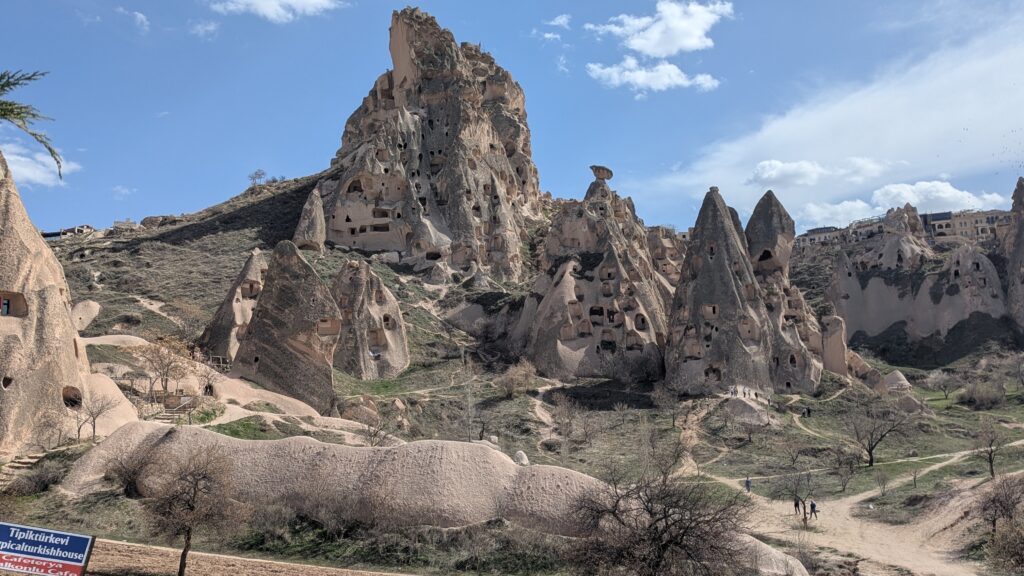

Later that evening we were dropped off at the tour office for a trip to the airport and a flight to Istanbul. We had a long drive back to the Antea Old Town Hotel and enjoyed our free day before flying home Sunday.
Restaurants
- Nuz Restaurant, Istanbul. We had dinner here our first night. Split several “mezes”.
- Topcu Kebap, Antalya. Small store front so we walked back and forth before finding it, but had a great plate of grilled veal. We split the excellent bean salad, too.
- Leman Kultur, Antalya. Multiple locations in Turkiye, a wide selection. Don’t remember what I had actually but we had good service and good food.
- Kazim Usta, Kusadasi. We found this while just out for a walk in Kusadasi, good menu, good service.
- Faros Old City, Istanbul. Convenient location just down from the Hippodrome.
- Anatolia House, Istanbul. Another good location close to the main sites in Old Town.
- Can Kebab & Kokoreç, Antalya. A small place just a short distance from Hadrian’s Gate, we had some Adana kebabs in great bread for a quick, cheap meal.
We had a great number of lunches included, some buffets, several with set menus. Only one was quality food, in my opinion. And oddly enough it was part of a carpet weaving store, Heirloom Weaving Center & Jewellery. Some lovely rugs, and it was interesting seeing the workers hand tying the knots but quite expensive. However, the attached restaurant was very good.
We also tried Antik Restaurant, Istanbul and Barbarian Medieval Tavern, Urgup that were just okay. My first night in town, I had dinner next door at Ross Kebab House. Food was good as was service, however, I hadn’t paid attention to the exchange rate and paid way too much for one meal.
** All pictures (except maps) property of Lisa, not to be copied or reproduced**
